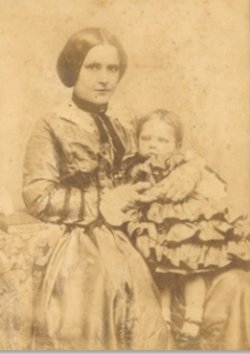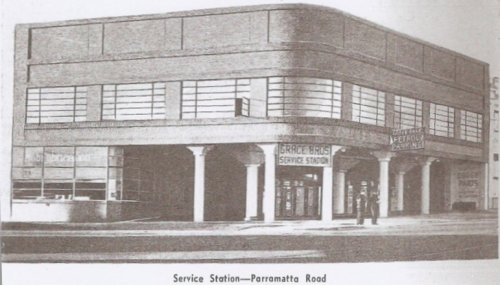Much is on the public record covering James Barnet’s career as Colonial Architect (see this article in our “People in Glebe’s History” section; this article focuses on his life in Glebe and Forest Lodge where he settled after arriving in Australia. Barnet is one of the architects whose local buildings are featured on the Glebe Walks website.
Born on 17 October 1827 in Scotland, Barnet was apprenticed to a builder at age 15, trained as an architect and was a clerk of works in London before migrating with his new wife Amy née Gosling in 1854 under the auspices of the Family Colonisation Loan Society. There was plenty of work for an architect in 1850s Sydney with the building of the University of Sydney and a number of churches. Barnet designed the Presbyterian Church (he was a deacon) in the Cleveland Paddock, and was employed by Edmund Blacket as a clerk of works on the Randwick Asylum and Sydney University’s Great Hall. (Barnet designed and coloured the carvings on its cedar ceiling; his watercolour of the interior of the Great Hall is in the Macleay Collection.)
In 1860 Barnet joined the NSW Colonial Architect’s Dept, responsible for major building and repair projects as well as lighting Sydney’s streets, cleaning the chimneys at Victoria Barracks and providing coffins for paupers. In 1865 he became Colonial Architect, succeeding old and incompetent John Dawson from whom he inherited a good deal of unauthorised expenditure. With fewer than 10 men on his regular staff, Barnet completed thousands of NSW public projects including defence works, lighthouses, courthouses, jails, post offices and police stations. His major Sydney buildings include the new wing of the Australian Museum, the General Post Office, Lands Dept, Chief Secretary’s Dept, Mortuary Station, Macquarie Lighthouse, and the neo-classical Callan Park complex (of which he was particularly proud). His Glebe legacy is its courthouse, police station, post office (no longer used for its original purpose) and the first fire station. His Garden Palace – conceived, designed and built in less than nine months in the Botanical Gardens – was destroyed by fire, but Barnet triumphed over criticism of the cost and style of his architecture.

James and Amy Barnet settled in Glebe, firstly in Christie St where their eldest child Amy was born in 1856. She was followed by four more daughters and a son born on Glebe Rd: Lilia (1858-1928), Rosa (1859- 1940), Enid (born 1861), Maud (1862–1949) and James jnr (1865-1932). In 1867 the family moved to Braeside a two-storey building on the corner of Ross St and Parramatta Rd, designed by Barnet and built by his own stonemasons. At Braeside (a popular house name recalling Scottish heritage) they kept pets (including a magpie, an Italian greyhound, a Skye terrier and a kangaroo) and two more sons were born: Thomas (1867-1931) and Donald McKay (1869-1940). James jnr and Thomas followed their father’s profession, while Donald became a clergyman. The Barnets worshipped at the Glebe Presbyterian Church.
Having served 20 years as Colonial Architect, James Barnet took 12 months’ leave to visit the art centres of Europe and the Broadmoor Asylum in England. Colleagues farewelled him with a picnic dinner at Cabarita Point before he sailed with his wife on the Ballaarat for Venice in January 1885, returning just in time to celebrate Christmas at Forest Lodge with their family. A few days later Barnet was back at work.
After an illness lasting several months (during which time James went home each day to spend his lunch hour with her) Amy Barnet died aged 59 at Braeside in December 1889. The following year her widower retired. Survived by four daughters and three sons, James Barnet died at Braeside on 16 December 1904 and was buried with his wife in the Presbyterian section at Rookwood where his and Amy’s profiles were worked into a granite and marble headstone.

Although in his will James had carefully divided his personal effects among his children, settling the affairs of the Barnet estate (which included an orchard at North Ryde) took years. Middle son Thomas and his family stayed on at 1 Ross St until 1907 when it was briefly occupied by Ernest Phillips. In November that year Braeside and its subdivided grounds were first put up for auction. The estate was readvertised twice in 1908, and again in March 1909. Bamboo and wicker furniture makers Paine Bros occupied the site briefly until 1912 when Grace Bros, diversifying into furniture removals and storage, erected a five-storey furniture depository fronting Ross St. It was some time pre-war that Braeside was demolished and a new caretaker’s house (3 Ross St) built on the Arundel St corner.
Beginning with two horse-drawn vehicles, Grace Bros Stables operated on the Ross St/Parramatta Rd corner until ca 1930 when the animals were replaced by motor vehicles and the site became Grace Bros Service Station. Head stableman James Gates and his wife Selina lived at 3 Ross St where the carters’ daily takings were kept overnight in a safe until collected by the cashier the next morning. In 1916 and 1922 the horses took fright when major fires broke out in the furniture depository. Gates’ successor as transport manager was ex-stock inspector and horse breeder Cyril George Abbs who moved into 3 Ross St with his wife Isabel Mary who bred greyhounds. (This house was demolished, probably by the Toga Group, following a heritage assessment conducted in 1998.)
In 1937 the multi-storey Ross St building was occupied by Taylor Bros (Boxes) makers of cardboard boxes and handkerchiefs. The firm, still at the same address, went into voluntary liquidation in 1962, by which time the Grace Bros Service Station had been replaced by a Mobil Service Station. Officeworks now dominates the old Braeside site.

James Barnet’s successor as Colonial Architect 1890-1911 was Walter Liberty Vernon. He designed Glebe’s second fire station on St John’s Rd and is an ancestor of Glebe Society member Katharine Vernon. Another Glebe Society member, Meg Wallace, is a descendant of James Barnet.









There are no comments yet. Please leave yours.